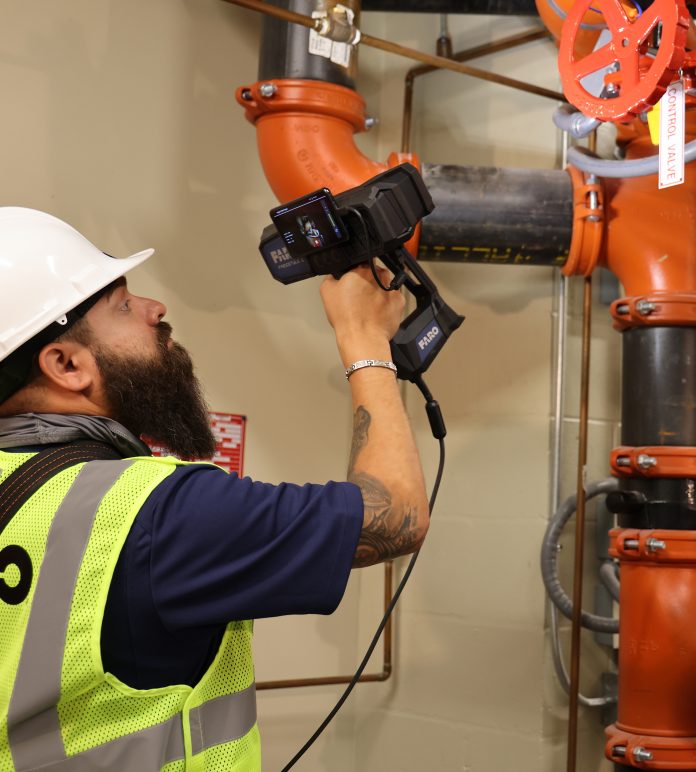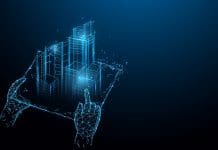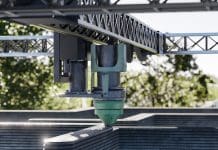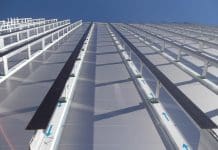Patrick Bohle, vice-president of solutions marketing at FARO Technologies, looks at how digital twinning will transform fault diagnosis, predictive maintenance and product development
As if last year needed any more unhappy news, the global scientific community was dealt a serious blow in its closing weeks when the famed Arecibo radio astronomy observatory in Puerto Rico collapsed.
The observatory was in the middle of a rushed dismantling after two cables failed over the summer and fall. The initial cable failure ripped open a 100ft gash in the observatory’s 1,000ft diameter reflector dish and the site was temporarily closed for repairs. A second cable failure in November sealed Arecibo’s fate as engineers concluded the facility could not be saved. A complete evacuation was ordered.
Built in the early 1960s, the 57-year-old technological wonder remained the world’s largest single-unit radio telescope until 2016 when the FAST (Five-hundred-meter Aperture Spherical radio Telescope) began operation in China.
Beaten in 2016. Broken in 2020.
Seeing double double?
But what if a tragedy like this never happened again? What if a future failure — of a structure, building or even assembled part — could be predicted not weeks or months in advance, but years, even before mass production of its component parts? With digital twin technology, the process by which physical objects are converted into digital replicas via 3D laser scanning and monitored and modelled with real-time cloud-based data analytics, that reality is coming to pass.
In just the next few years, in fact, the world’s digital twin market is expected to grow at a compounded annual growth rate (CAGR) of nearly 38%, reaching $16.4bn by 2024. About half of that growth, 41%, is forecast to occur in North America, with the automobile and aerospace industries dominating. In Europe, the digital twin market share was estimated at $1bn in 2019 with a CAGR of about 30% from 2020-2026.
Broadly speaking, digital twin-enabled structural health monitoring and predictive maintenance represent the threshold of where this technology can take the world. It’s a fact not lost on the UK, a nation that has committed itself via the National Digital Twin Programme to unite construction professionals and other government and private sector leaders in embracing digital twin technology based on the belief that “high-quality, secure data can improve how infrastructure is built, managed, operated and eventually decommissioned”.
Already this ethos is being put to the test. In one recent UK study, two Staffordshire railway bridges had fibre optic sensors fitted on them during construction, measuring real-time “strain/stress evolution” and “strain/stress distribution” as a proof-of-concept test. Combined with “finite element” predictive modelling achieved through on-structure sensor data, “can be used to help establish a performance baseline, thereby achieving long-term condition monitoring and data-informed asset management as subsequent sensor data are collected throughout the bridge’s operating life”.
In other words, it could mean engineering failures like those that befell Arecibo (and others like it) might soon be ancient history.
For instance, had Arecibo been 3D laser scanned and fitted with monitoring sensors, detecting the tensile strength of its primary and auxiliary cables, the structure’s long-term integrity could have been tracked, along with a variety of historic and real-time meteorological and seismic data. While engineers already perform regular inspections on the structures they build, digital twinning allows for unparalleled near-instantaneous insights and much faster reaction times.
That’s true not only in failure prediction and structural health monitoring for long-completed structures like Arecibo, but for any structure or part where monitoring and modelling is desired. Arecibo’s auxiliary cables were added in the 1990s without predictive maintenance. But consider what will happen when the next generation of ground-based telescopes eclipse China’s FAST, and are built from the ground up using digital twinning?
Digital twinning for the win-win
The answer is a better, more robust, safer product, delivered to market in potentially record time. It also means greater flexibility in sharing that data remotely, faster, giving manufacturers the ability to access blueprints anywhere in the world, but with the advantage of complete synchronicity between the physical and digital assets.
Best of all is that nearly any industry stands to benefit, as will consumers. For the automobile industry, the collection of digital twin data from on-road vehicles has the potential to provide invaluable performance metrics – metrics that could help advance vehicle design, improve safety and fuel efficiency standards, and perhaps, serve as a catalyst for the accelerated adoption of electric vehicles. For manufacturers, products can also begin their lifecycle in the digital realm where a 3D model can simulate real-world performance.
Auto factories themselves can be digital twinned as well, monitoring anything from building sustainability and performance to operations and maintenance, even occupant/employee health and wellness. In the near future, factories of all types will benefit from: shorter planning/construction lifecycles; faster turnaround times; increased reliability and efficiency; enhanced automation; and, perhaps most exciting, the ability to adopt a “build where you are” approach – copying the design specs of a physical plant and constructing it closer to the demand market. Such decisions will have profound economies of scale impacts.
The same predictive maintenance and factory build potential applies to airplanes too. Fitted with remote sensors and shared via the cloud, metrics like turbine performance, hydraulic controls and the aircraft’s environmental control system (of particular importance in the post-Covid era) can all be instantly monitored and improved before problems occur. Here too, a digital twin can begin virtually with performance maximised – even before the first physical aircraft parts are assembled.
What digital twins can do for you
Applied to the world’s architectural, construction and engineering projects, digital twinning can be expected to:
- Generate efficiency gains across the entire product or asset lifecycle.
- Gain insights into real-time customer use patterns, which will be fed back into 3D digital simulations resulting in additional improvements.
- Predict failures and maintenance based on real-world data fed into the model.
- Create a “digital thread” whereby disparate systems and processes can be connected remotely.
- Troubleshoot problems without having to travel to the physical asset.
- Better understand the interrelationships between the systems within systems that complete a finished product (think buildings, airplanes, automobiles, etc)
- Monitor and assess historic structures and landmarks for ongoing maintenance or accurate repair.
As IoT technology proliferates – with an estimated global market share of $1.3bn by 2026 and around 75bn devices connected to the internet – digital twins’ reach will only expand. And while start-up expense and data migration is a necessary conversion factor, digital twins’ return on investment is high, thus justifying its implementation.
“Mirror worlds,” materialised
In 1963, when the Arecibo Observatory came online, it was a different world. One of the first supercomputers, the Atlas, began operations at the University of Manchester with a memory capacity of about 96 kilobytes. The first scientific papers, let alone the actual hardware for networked computing, were still four years distant. Today, digital twinning is the outgrowth of these pioneering efforts.
As businesses and manufacturers emerge from the global pandemic, outthinking and outmanoeuvring the competition begins with adopting innovative solutions destined to speed time to decision, distribute better data faster and share that information with all project stakeholders anywhere in the world, entirely remote.
Digital twinning is the dynamic real-time modelling approach that stands to achieve just that.
Regional
FARO UK
Tel: +49 (0)7150 9797 – 400
Twitter: @faroeurope
Please note: this is a commercial profile.












![[VIDEO] World’s largest crane lifts final ring at Hinkley Point C Big Carl, the world's largest crane, lifting the final liner ring for Hinckley Point C](https://www.pbctoday.co.uk/news/wp-content/uploads/2024/10/94747-218x150.jpg)

